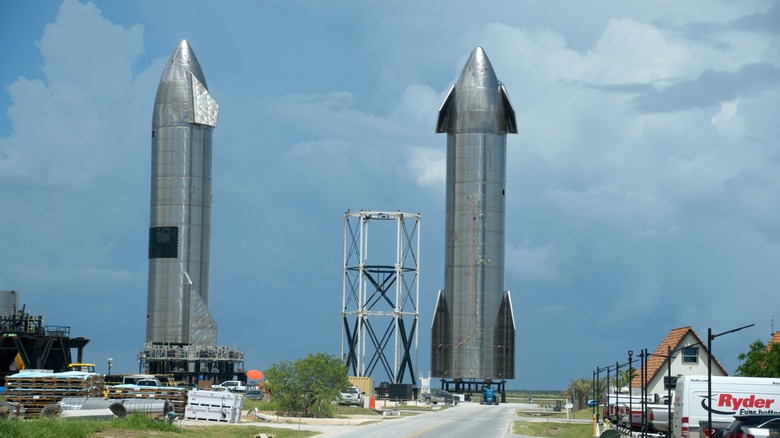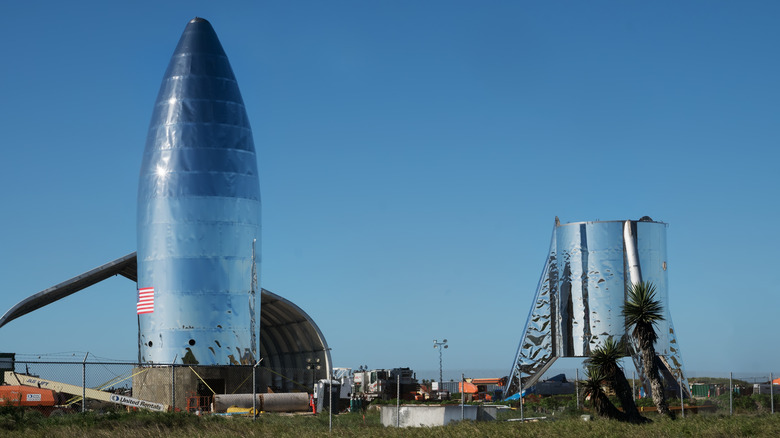Why SpaceX's Starship Is Made Out Of Stainless Steel According To Elon Musk
The grand plan for Starship, Space X's interplanetary spaceship, is to build a reusable transportation system to ferry people, satellites, and cargo weighing more than 220,462 pounds into space. Fitted with Raptor, a reusable methalox staged-combustion engine (the first one ever flown), it was intended to be used to help colonize Mars or travel to whatever missions may lie beyond the final frontier. In the more immediate future, NASA will be using Starship for its first crewed lunar lander under the Artemis 3 mission, which will hopefully touch down at the lunar south pole in 2025.
It is not uncommon for designs to evolve and change over time. The whole point of testing is to find the flaws. Such was the case with Space X's first Falcon 1 launch, which failed simply because the rocket was exposed to sea air for too long, rust caused an aluminum nut to fail, and the rocket caught on fire.
Sometimes the initial plan changes because of cost. The hull of the rather unimaginatively — or is it startlingly visionary? — starship named "Starship" (hopefully not piloted by someone named Captain Obvious) was initially meant to be made out of carbon fiber.
Oh so shiny!
In January 2019, Elon Musk was interviewed by "Popular Mechanics," the long-running magazine that focuses on science and technology. During the interview, he stated that Starship's hull would be made out of stainless steel instead of carbon fiber mainly because it was cheaper. But it also had some additional benefits.
According to Musk, carbon fiber is incredibly pricey, costing some $135 per kilogram (or 2.2 pounds). Not only that but as much as 35% of the material was getting wasted and tossed into the trash just through the cutting and shaping process. In the end, it was actually costing SpaceX closer to $200 for every kilogram of carbon fiber material. Stainless steel costs less than a coffee pod for a Starbucks brewer at only $3 per kilo (via Space).
Not only that, but stainless steel has a much higher melting point, making it a more robust material for the heat it would encounter during reentry. Musk said carbon fiber has "a steady-state operating temperature" of about 300 degrees Fahrenheit, with some forms going as high as 400 degrees. You can go beyond that, but for only a brief time, and even then, it starts to degrade and weaken. Stainless steel can withstand temperatures as high as 1,600 degrees Fahrenheit (via Space).
Ultimately, it was a no-brainer for the company to switch over to the shiny, far less expensive, and more durable material. And yes, it does look oddly similar to Flash Gordon's spaceship from the '30s. Or a grain silo. But if it gets you into space, does that really matter?

